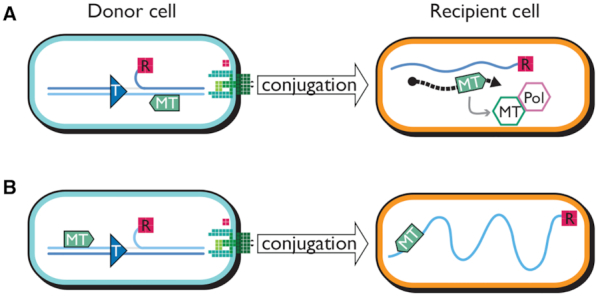Figure 7.

Conjugal DNA transfer positions the MTase gene for expression and coordinated action with PolI in the native orientation but not with inverted oriT. Blue lines are DNA; light blue carries the coding sequence for the MTase gene (green arrow); dark blue carries the Frpo promoter. (A) In the native orientation the relaxase (R) nicks at oriT (T), becoming covalently attached to the 5′ side of the nick. Leading strand synthesis from the 3′ side of the nick, and interaction of relaxase with the conjugal apparatus (green structure at the cell periphery), conveys the displaced single strand into the recipient. Transcription (dashed black arrow) from Frpo on the conjugal DNA strand allows translation of the MTase gene. This MTase (green hexagon) can then interact with endogenous PolI (lavender hexagon) to modify the single conjugal strand as lagging strand synthesis proceeds from Frpo transcripts (not shown). (B) When oriT is inverted, the MTase gene is transferred late and on the wrong strand for expression, leaving the double-stranded product (not shown) sensitive to restriction.
